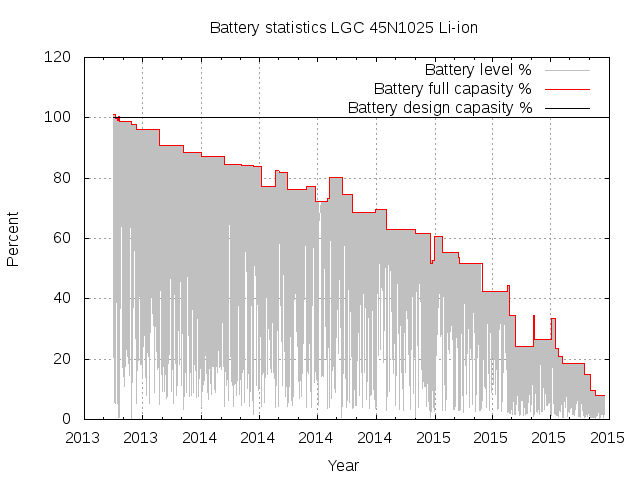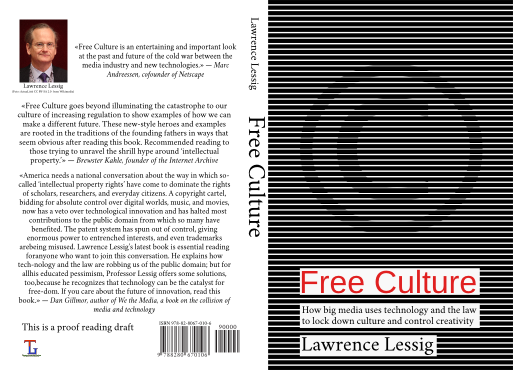+
It was a surprise to me to learn that project to create a complete
+computer system for schools I've involved in,
+Debian Edu / Skolelinux, was
+being used in India. But apparently it is, and I managed to get an
+interview with one of the friends of the project there, Shirish
+Agarwal.
+
+
Who are you, and how do you spend your days?
+
+
My name is Shirish Agarwal. Based out of the educational and
+historical city of Pune, from the western state of Maharashtra, India.
+My bread comes from giving training, giving policy tips,
+installations on free software to mom and pop shops in different
+fields from Desktop publishing to retail shops as well as work with
+few software start-ups as well.
+
+
How did you get in contact with the Skolelinux / Debian Edu
+project?
+
+
It started innocently enough. I have been using Debian for a few
+years and in one local minidebconf / debutsav I was asked if there was
+anything for schools or education. I had worked / played with free
+educational softwares such as Gcompris and Stellarium for my many
+nieces and nephews so researched and found Debian Edu or Skolelinux as
+it was known then. Since then I have started using the various
+education meta-packages provided by the project.
+
+
What do you see as the advantages of Skolelinux / Debian
+Edu?
+
+
It's closest I have seen where a package full of educational
+software are packed, which are free and open (both literally and
+figuratively). Even if I take the simplest software which is
+gcompris, the number of activities therein are amazing. Another one of
+the softwares that I have liked for a long time is stellarium. Even
+pysycache is cool except for couple of issues I encountered
+#781841 and
+#781842.
+
+
I prefer software installed on the system over web based solutions,
+as a web site can disappear any time but the software on disk has the
+possibility of a larger life span. Of course with both it's more a
+question if it has enough users who make it fun or sustainable or both
+for the developer per-se.
+
+
What do you see as the disadvantages of Skolelinux / Debian
+Edu?
+
+
I do see that the Debian Edu team seems to be short-handed and I
+think more efforts should be made to make it popular and ask and take
+help from people and the larger community wherever possible.
+
+
I don't see any disadvantage to use Skolelinux apart from the fact
+that most apps. are generic which is good or bad how you see it.
+However, saying that I do acknowledge the fact that the canvas is
+pretty big and there are lot of interesting ideas that could be done
+but for reasons not known not done or if done I don't know about them.
+Let me share some of the ideas (these are more upstream based but
+still) I have had for a long time :
+
+
1. Classical maths question of two trains in opposing directions
+each running @x kmph/mph at y distance, when they will meet and how
+far would each travel and similar questions like these.
+
+
The computer is a fantastic system where questions like these can
+be drawn, animated and the methodology and answers teased out in
+interactive manner. While sites such as the
+Ask
+Dr. Math FAQ on The Two Trains problem (as an example or point of
+inspiration) can be used there is lot more that can be done. I dunno
+if there is a free software which does something like this. The idea
+being a blend of objects + animation + interaction which does
+this. The whole interaction could be gamified with points or sounds or
+colourful celebration whenever the user gets even part of the question
+or/and methodology right. That would help reinforce good behaviour.
+This understanding could be used to share/showcase everything from how
+the first wheel came to be, to evolution to how astronomy started,
+psychics and everything in-between.
+
+
One specific idea in the train part was having the Linux mascot on
+one train and the BSD or GNU mascot on the other train and they
+meeting somewhere in-between. Characters from blender movies could
+also be used.
+
+
2. Loads of crossword-puzzles with reference to subjects: We have
+enormous data sets in Wikipedia and Wikitionary. I don't think it
+should be a big job to design crossword puzzles. Using categories and
+sub-categories it should be doable to have Q&A single word answers
+from the existing data-sets. What would make it easy or hard could be
+the length of the word + existence of many or few vowels depending on
+the user's input.
+
+
3. Jigsaw puzzles - We already have a great software called
+palapeli with number of slicers making it pretty interesting. What
+needs to be done is to download large number of public domain and
+copyleft images, tease and use IPTC tags to categorise them into
+nature, history etc. and let it loose. This could turn to be really
+huge collection of images. One source could be taken from
+commons.wikimedia.org, others could be huge collection of royalty-free
+stock photos. Potential is immense.
+
+
Apart from this, free software suffers in two directions, we lag
+both in development (of using new features per-se) and maintenance a
+lot. This is more so in educational software as these applications
+need to be timely and the opportunity cost of missing deadlines is
+immense. If we are able to solve issues of funding for development and
+maintenance of such software I don't see any big difficulties. I know
+of few start-ups in and around India who would love to develop and
+maintain such software if funding issues could be solved.
+
+
Which free software do you use daily?
+
+
That would be huge list. Some of the softwares are obviously apt,
+aptitude, debdelta, leafpad, the shell of course (zsh nowadays),
+quassel for IRC. In games I use shisen-sho while card-games are evenly
+between kpat and Aiselriot. In desktops it's a tie between
+gnome-flashback and mate.
+
+
Which strategy do you believe is the right one to use to
+get schools to use free software?
+
+
I think it should first start with using specific FOSS apps. in
+whatever environment they are. If it's MS-Windows or Mac so be it.
+Once they are habitual with the apps. and there is buy-in from the
+school management then it could be installed anywhere. Most of the
+people now understand the concept of a repository because of the
+various online stores so it isn't hard to convince on that front.
+
+
What is harder is having enough people with technical skills and
+passion to service them. If you get buy-in from one or two teachers
+then ideas like above could also be asked to be done as a project as
+well.
+
+
I think where we fall short more than anything is in marketing. For
+instance, Debian has this whole range of fonts in its archive but
+there isn't even a page where all those different fonts in the La
+Ipsum format could be tried out for newcomers.
+
+
One of the issues faced constantly in installations is with updates
+and upgrades. People have this myth that each update and upgrade
+means the user interface will / has to change. I have seen this
+innumerable times. That perhaps is one of the reasons which browsers
+like Iceweasel / Firefox change user interfaces so much, not because
+it might be needed or be functional but because people believe that
+changed user interfaces are better. This, can easily be pointed with
+the user interfaces changed with almost every MS-Windows and Mac OS
+releases.
+
+
The problems with Debian Edu for deployment are many. The biggest
+is the huge gap between what is taught in schools and what Debian Edu
+is aimed at.
+
+
Me and my friends did teach on week-ends in a government school for
+around 2 years, and
+gathered
+some experience there. Some of the things we learnt/discovered
+there was :
+
+
+
+ - Most of the teachers are very territorial about their subjects
+ and they do not want you to teach anything out of the
+ portion/syllabus given.
+
+ - They want any activity on the system in accordance to whatever
+ is in the syllabus.
+
+ - There are huge barriers both with the English language and at
+ times with objects or whatever. An example, let's say in gcompris
+ you have objects falling down and you have to name them and let's
+ say the falling object is a hat or a fedora hat, this would not be
+ as recognizable as say a
+ Puneri
+ Pagdi so there is need to inject local objects, words wherever
+ possible. Especially for word-games there are so many hindi words
+ which have become part of english vocabulary (for instance in
+ parley), those could be made into a hinglish collection or
+ something but that is something for upstream to do.
+
+
+
+



 +
+
+
+ +
+
+
+ +
+
+
+